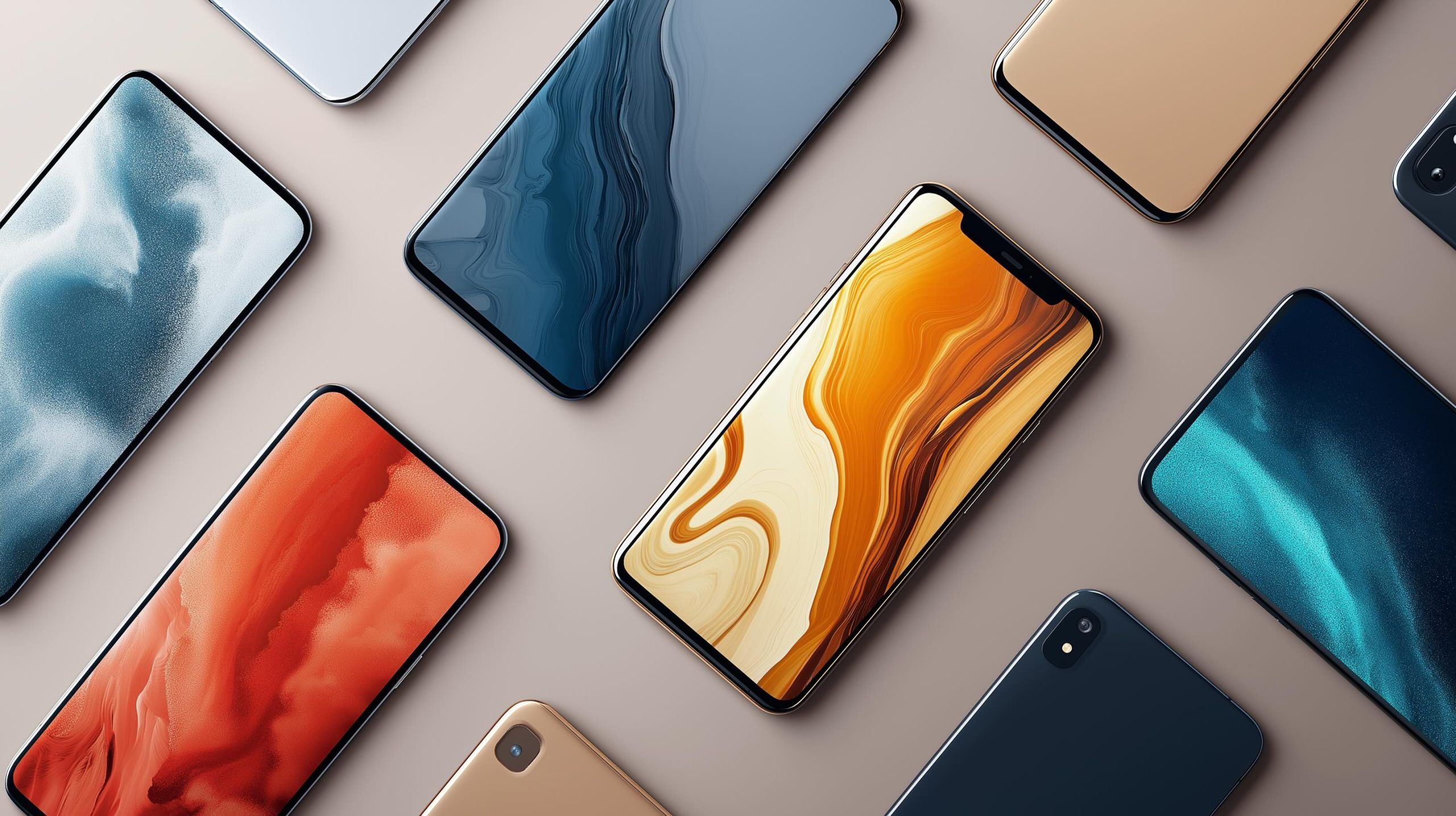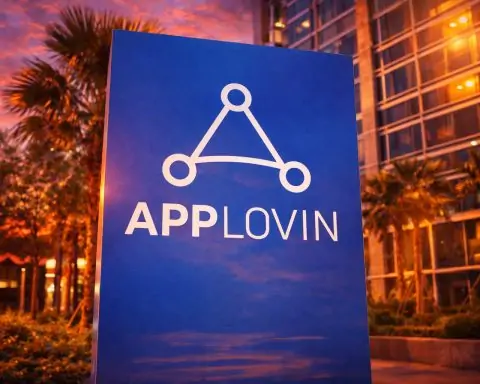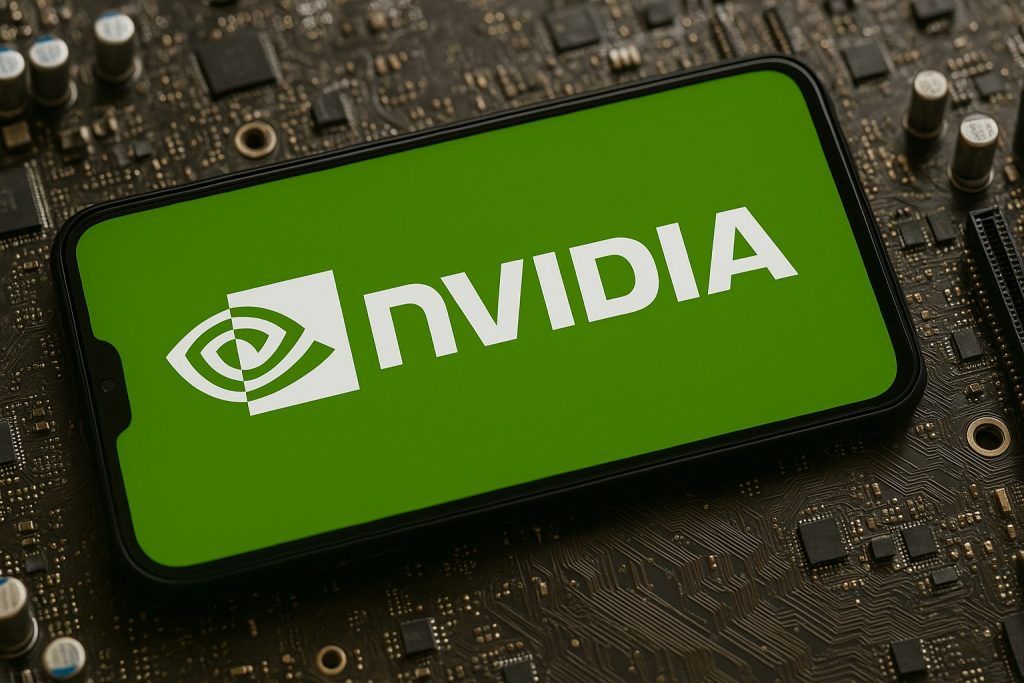- Nothing announces the Nothing Phone 3 and Nothing Headphone 1 at a July 1, 2025 London launch event, streamed globally at 10:30 PM IST.
- Samsung reportedly teases a tri-fold device, possibly named the Galaxy G Fold, at Galaxy Unpacked on July 9, 2025, with an October release rather than alongside the Galaxy Z Fold/Flip 7 lineup.
- Samsung confirms One UI 8.5 based on Android 16, slated to debut with the Galaxy S26 in early 2026 and to roll out across devices through 2026.
- Samsung begins a One UI 8 Watch beta for the Galaxy Watch 7 and Watch 7 Ultra on June 30, 2025, with the ZYFE build (~1.9 GB) on Wear OS 6.
- Apple iPhone 17 Pro may shift the logo downward to accommodate a new full-width top camera bar, per a Majin Bu leak.
- Apple iOS 26 is rumored to include AirPods live translation and universal credential syncing for Wi‑Fi logins, arriving as iOS 26.1 or 26.2 later in 2025.
- Google Pixel Watch 3 gains Bluetooth 6.0 Channel Sounding for centimeter‑level ranging, introduced in Wear OS 5.1 but requiring other devices to support the feature.
- Xiaomi launches AI Smart Glasses in China with a 12 MP ultra-wide camera, real-time in-view text translation, QR code scanning, XiaoAI, 8.6 hours battery life, 45-minute recharge, Snapdragon AR1, and a 1,999 yuan price.
- WhatsApp Android beta v2.25.19.21 adds an in‑app Scan Document feature that auto-detects edges and exports PDFs via the attachment menu.
- The GizChina-backed market insight notes 2024 smart glasses sales rose 210%, with another 60% growth expected in 2025.
Introduction
The last day of June 2025 delivered a flurry of mobile technology updates – from upcoming smartphone launches and foldable device teasers to significant software feature news. In this comprehensive roundup, we summarize all the major mobile tech news of June 30, 2025, with insights on what these developments mean for the industry. Read on for the latest on Nothing’s new phone launch, Samsung’s foldable ambitions and software updates, Apple’s iOS and iPhone rumors, Google’s wearable tech features, Xiaomi’s foray into smart eyewear, and WhatsApp’s newest app feature – complete with expert commentary and source links for each story.
Nothing Prepares to Launch Phone 3 and Headphones
London-based startup Nothing is gearing up for a major product unveiling on July 1, teasing its Nothing Phone 3 as the brand’s next flagship smartphone. The company’s “Come to Play” launch event in London will not only debut the Phone 3 but also introduce Nothing’s first over-ear headphones, Nothing Headphone 1 [1]. The event will be streamed live (10:30 PM IST) for a global audience. This ambitious dual launch signals Nothing’s expansion beyond smartphones into audio gear, reflecting founder Carl Pei’s strategy to build an integrated ecosystem. Tech observers note that Nothing has generated significant hype with its design-centric approach; all eyes will be on whether the Phone 3’s specs and transparent design can meaningfully challenge established Android flagships. If successful, Nothing could bolster competition in the premium mid-range segment and further diversify the smartphone market with its distinctive style and fanbase-driven marketing.
Samsung: Tri‑Fold Device Teaser and One UI Updates
Samsung is stirring excitement in the foldable phone arena with reports that it may preview a tri‑fold device during its upcoming Galaxy Unpacked event on July 9. According to industry leaks, Samsung might tease a concept device – possibly dubbed the “Galaxy G Fold” – featuring a tri-folding screen that folds into three segments [2]. While this tri-fold gadget is not expected to launch alongside the Galaxy Z Fold/Flip 7 series next month, it could be shown as a glimpse of Samsung’s future form-factor. Insiders indicate the actual release of this tri-fold device would come later (rumors point to October), separate from the dual-screen Z-series. If Samsung does unveil such a prototype, it would underscore the company’s ongoing investment in display innovation and its intent to stay ahead in the folding phone race. Experts say a tri-fold design, which expands from smartphone to tablet with an extra hinge, could push the envelope for mobile productivity – though durability and cost will be key factors. This teaser could build buzz and gauge consumer interest for new form factors as foldables gain traction.
In software news, Samsung confirmed it is working on One UI 8.5, a mid-cycle update to its Android interface that will be based on Android 16. Notably, Samsung is returning to the “.5” version naming (last used with One UI 2.5 in 2020) by skipping 8.1, indicating this update is more substantial than a minor patch [3]. One UI 8.5 is expected to debut alongside the Galaxy S26 flagship series in early 2026 and then roll out to a wide range of devices throughout 2026 [4]. According to Samsung insiders, virtually all devices that received One UI 8.0 should also get 8.5 – meaning recent Galaxy S and Z flagships (S21 onwards), many A-series mid-rangers, and newer M/F series phones are on the upgrade list [5]. The update is anticipated to deliver refinements and fixes based on user feedback to One UI 8.0, along with UI tweaks, camera improvements, and efficiency optimizations. As one commentator put it, One UI 8.5 is either a return to form — or an admission that One UI 8.0 left a bit too much unfinished [6]. In other words, Samsung appears keen to polish any rough edges from the Android 16 transition with this .5 release. This approach suggests Samsung is listening to users and willing to deploy significant improvements without waiting for One UI 9.0. It’s a welcome sign for Galaxy owners hoping for smoother performance and enhanced features in between major Android releases.
Samsung isn’t stopping at phones – it’s also updating its wearables. The company kicked off a One UI 8 Watch beta program for the Galaxy Watch 7 and Watch 7 Ultra smartwatches on June 30. The new smartwatch firmware (build ZYFE, ~1.9 GB) is built on Wear OS 6 and brings several new features, including a “Now Bar” interface element borrowed from One UI 7 (phones) to improve glanceable controls on the watch [7]. Early participants in South Korea and the US can test enhancements like smarter always-on display behavior and other UI refinements. This rapid deployment of a Watch 8.0 beta shows Samsung’s commitment to keeping its wearables in lockstep with the latest Android-based OS developments. For users, it means Galaxy Watches will continue to integrate deeply with Samsung’s ecosystem and potentially lead Wear OS in adding custom features. Analysts note that Samsung’s close partnership with Google on Wear OS allows it to iterate quickly, and such betas help ensure a polished public release (expected later in the year) with new capabilities that can stand out against the Apple Watch.
Apple: iPhone 17 Pro Design Leak and iOS 26 Feature Pipeline
Apple may be planning a significant design tweak for the iPhone 17 Pro in 2025 – one that would affect its iconic logo placement. According to a leak from a source known as “Majin Bu,” the Apple logo on the back of the iPhone 17 Pro will shift downward from its current centered position for the first time in about six years [8]. The reason? Apple is reportedly introducing a new full-width top camera bar on the iPhone 17 Pro that spans the entire back, necessitating the logo to move closer to the bottom-center of the device [9]. This leak was accompanied by an image posted on social media, showing a dramatically redesigned rear camera layout. If accurate, it suggests Apple is overhauling the camera module (possibly to accommodate advanced lenses or a larger sensor array), to the extent that the familiar Apple logo must be relocated – a change not seen since the iPhone 11’s shifted logo. Such a design shift underscores how camera technology is driving form-factor changes in smartphones. A lower logo might seem trivial, but for Apple’s meticulous design language it’s noteworthy: it hints that the iPhone 17 Pro’s camera bump will be so pronounced or differently arranged (a horizontal “camera bar” similar to Google’s Pixel, perhaps) that it alters Apple’s long-standing aesthetic balance. Industry watchers say this aligns with rumors of a major camera upgrade (like a periscope zoom lens or new sensors) coming in 2025’s iPhones [10]. If Apple indeed opts for a camera-bar design, it could improve camera capabilities and differentiate the iPhone 17 Pro’s look – but it also means Apple is confident consumers will accept a break from tradition in exchange for photography improvements. We’ll learn more as leaks evolve, but this rumor has already sparked discussion among Apple fans and designers.
Meanwhile, Apple is also fine-tuning its software strategy. According to a report from Bloomberg’s Mark Gurman, iOS 26 still has some unannounced features in the pipeline despite not being revealed at the WWDC 2025 keynote [11]. Two notable capabilities – live translation via AirPods (allowing real-time language translation in conversations through AirPods) and universal credential syncing for Wi-Fi logins (so that once you log into a captive Wi-Fi network on one device, your other Apple devices automatically have access) – were heavily rumored for iOS 26 but didn’t make the cut at WWDC [12]. Gurman’s sources say these features weren’t scrapped; instead, Apple is holding them back until they’re closer to ready. The company learned its lesson after WWDC 2024, where it announced some high-profile iOS 25 features that ended up delayed for months. “At WWDC, Apple was careful not to announce anything that wasn’t close to shipping… [it] didn’t want to risk repeating WWDC 2024, where it announced several features — including some tentpole technology — that were ultimately delayed” [13]. This cautious approach means Apple prefers to under-promise and then deliver these additions in point releases (26.1, 26.2) later in the year rather than advertise them too early. According to Gurman, both AirPods live translation and Wi-Fi password sync should arrive by the end of 2025, likely in the iOS 26.1 update around October or 26.2 by December [14]. For Apple users, these features will be significant quality-of-life improvements – breaking language barriers for AirPods users and simplifying those annoying café/hotel Wi-Fi logins across your iPhone, iPad, and Mac. Apple’s decision to delay announcing them indicates a focus on launching features when they’re fully baked, to avoid repeating past missteps and to ensure a smoother rollout. This strategy ultimately benefits users with more reliable new features, even if it means waiting a few extra months after the initial iOS 26 launch.
Google & Android: Pixel Watch 3’s New Tracking Tech
Google’s Pixel Watch 3 is quietly gaining a powerful new ability: precise device tracking via Bluetooth. As discovered in a recent software update, the Pixel Watch 3 is one of the first Android devices to support Bluetooth 6.0’s Channel Sounding feature [15]. Introduced in the Wear OS 5.1 update (rolled out back in March), Channel Sounding lets the watch measure distance to other devices with centimeter-level accuracy using standard Bluetooth signals [16]. In effect, this gives the Pixel Watch 3 a capability similar to Apple’s UWB-powered AirTag finding – but without needing Ultra-Wideband hardware. The watch can send out multiple Bluetooth pings on different frequencies and calculate how long they take to bounce back, determining precise range and even direction [17]. In theory, this could enable very accurate “Find my device” functions, allowing users to locate a lost phone or earbuds with on-screen guidance, much like iPhones do with AirTags. However, Google hasn’t fully activated consumer-facing features for Channel Sounding yet. As The Verge reports, the Pixel Watch 3’s hardware supports it, but you also need other devices to support Channel Sounding before it’s truly useful [18]. Right now, the Pixel Watch might be ahead of the curve – acting as a pioneer for Bluetooth-based tracking while the rest of the Android ecosystem catches up. Google and other manufacturers would need to update phones and perhaps Bluetooth trackers to utilize this system. Experts say this is a promising development: “The advantage of Channel Sounding is that it uses the Bluetooth hardware that’s now common in nearly every smartphone, smartwatch, and set of wireless headphones”, meaning it could democratize precise locating features without requiring new chips [19] [20]. If Android phones embrace Bluetooth 6.0 fully, the millions of existing Bluetooth devices could form a network to rival Apple’s UWB-based approach. The Pixel Watch 3 essentially proves that accurate item tracking can be done with Bluetooth alone. For now, it’s a hidden talent – but as Google integrates this into its Find My Device network and more products get Bluetooth 6.0, expect Android users to gain much better lost-item tracking capabilities in the near future. This also highlights Google’s drive to catch up with (or leapfrog) Apple in device finding tech: a Pixel Watch 3 on your wrist might soon double as a homing device to find your other gadgets with precision.
Xiaomi Launches AI-Powered Smart Glasses
Xiaomi has officially entered the smart eyewear market with the launch of its Xiaomi AI Smart Glasses in China – and it’s making a splash with high-tech features and aggressive pricing. These smart glasses are packed with capabilities aimed at simplifying daily tasks through augmented reality and AI. They sport a built-in 12 MP ultra-wide camera, enabling first-person photos and video capture via voice command [21]. The glasses are intelligent enough to recognize objects, translate text in real time (right in your field of view), and scan QR codes for instant actions like payments [22]. Xiaomi’s voice assistant XiaoAI is integrated into the glasses, so users can ask questions or give commands and hear responses through the built-in speakers – essentially putting a virtual assistant in your eyewear for hands-free help on the go [23].
Where Xiaomi’s device really outshines competitors is battery life: the company claims 8.6 hours of continuous use on a single charge [24]. That’s more than double the ~4 hours that Meta’s Ray-Ban Stories glasses last, solving a common pain point for wearables. Impressively, the glasses also recharge in just 45 minutes, minimizing downtime [25]. Under the hood, Xiaomi equipped the device with Qualcomm’s Snapdragon AR1 chip to handle AI processing locally, ensuring speedy performance for tasks like visual recognition without relying entirely on a phone connection [26]. This silicon helps the glasses quickly and accurately interpret the world – whether it’s identifying a product you’re looking at or translating a sign on the fly [27]. The hardware and AI features are packed into a stylish, relatively normal-looking glasses frame (weighing about the same as regular sunglasses), which is crucial for user comfort and social acceptability.
Crucially, Xiaomi has priced the AI Smart Glasses at 1,999 yuan (around $280) for the base model [28]. This is dramatically lower than many rivals; for context, Meta’s smart glasses and other AR eyewear can cost $400 or more with fewer capabilities. The low price, combined with Xiaomi’s massive ecosystem in China, could be a game-changer. Analysts say Xiaomi’s entry may disrupt a market dominated by Meta, which held over 60% of global smart glass sales last year [29]. With global smart glasses sales surging 210% in 2024 and another 60% growth expected in 2025 [30], Xiaomi is seizing a prime moment. Experts highlight Xiaomi’s advantage in its enormous ecosystem: these glasses will seamlessly integrate with Xiaomi smartphones, smart home appliances, and even its electric vehicles [31]. That means a user wearing the glasses could potentially get AR overlays from their Xiaomi home devices or car, creating a cohesive AI-powered life. By leveraging this ecosystem and hitting an affordable price point, Xiaomi is positioning itself to bring AR glasses to the masses – at least in its home market first. The implications are significant: if these glasses gain traction, we could see AR wearables becoming mainstream consumer gadgets, not just pricey toys for early adopters. Xiaomi’s move also puts pressure on other players (like Meta, Apple, and smaller startups) to innovate and perhaps adjust pricing in the nascent AR eyewear space. It’s early days, but Xiaomi’s smart glasses launch is a bold bet that everyday users are ready for wearable AI – and that Xiaomi can undercut and out-iterate the competition in this fast-growing segment [32].
WhatsApp Tests In‑App Document Scanner
WhatsApp is adding yet another handy feature to its ever-expanding toolkit: the ability to scan documents directly within the app using your phone’s camera. In the latest beta (v2.25.19.21) of WhatsApp for Android, a new “Scan Document” option has appeared for some users, allowing them to capture physical documents and convert them into PDF files without leaving WhatsApp [33]. This built-in document scanner can automatically detect document edges and has both manual and auto-capture modes for optimized scanning [34]. Essentially, WhatsApp is eliminating the need for third-party scanner apps or using your phone’s default camera app for scanning – you can do it on the fly in a chat. A leaked screenshot (courtesy of WABetaInfo) shows the feature accessible via the attachment menu (the “+” or paperclip icon) where a new “Scan Document” button triggers the camera with document detection UI [35]. Users can snap a picture of, say, a contract or receipt; WhatsApp will auto-crop and enhance it, then instantly turn it into a PDF ready to send in the chat [36].
This feature is currently limited to a subset of beta testers on Android [37]. A similar capability has existed on WhatsApp’s iOS version for a while via iPhone’s native document scanner, so it’s good to see Android getting parity. The scanner integration is particularly useful for WhatsApp’s huge user base in business and education settings, where sharing signed forms, IDs, or printed information is common. By making it part of the app, WhatsApp keeps users engaged within its platform for all their communication needs – text, voice, payments, and now document handling. According to those familiar with WhatsApp’s development cycle, the company often tests such features in beta for a few weeks before a wider rollout. We can expect the in-app document scanning to roll out to all users in the next couple of months if testing goes smoothly [38]. This move is in line with WhatsApp’s recent push into productivity and business features (like multi-device support and WhatsApp Pay). For the mobile industry, it’s another example of chat apps becoming one-stop platforms: users can chat, call, pay, and now digitize paperwork all in one place. It heightens competition between WhatsApp and other messaging apps or even OS-level services like Google Drive’s scanner. Ultimately, WhatsApp’s built-in scanner will make it easier for billions of users – especially in emerging markets where WhatsApp is the primary app – to go paperless and share documents securely. Just as importantly, it keeps people within WhatsApp’s ecosystem, reinforcing its position as a central hub of digital life on mobile.
Conclusion
From hardware to software, the mobile tech landscape on June 30, 2025 was bustling with advancements. We saw new device innovations – Nothing gearing up to challenge the status quo with Phone 3, Samsung hinting at the next frontier of foldables, and Xiaomi democratizing AR glasses – all pointing to an exciting upcoming hardware cycle. Meanwhile, software and platform updates dominated the day’s news, with Apple refining its approach to feature rollouts, Samsung polishing its Android experience, and Google leveling up wearable capabilities, signaling a continued arms race between ecosystems to deliver the most seamless user experience. Even apps like WhatsApp are doubling down on functionality, blurring the lines between communication and productivity tools on our phones. The implications of these updates are far-reaching: competition is spurring innovation (and occasionally emulation) across the board, whether it’s in form-factor design, AI integration, or user privacy and convenience features. Mobile industry experts note that the consumer stands to benefit as companies race to outdo each other – phones and wearables are becoming more powerful and feature-rich, while software is increasingly tailored to user needs and cross-device harmony. In summary, June 30, 2025 offered a snapshot of a mobile tech world that is fast-evolving yet user-centric, where even the smallest beta test or leak can hint at tomorrow’s game-changing product. As we move into July, expect the momentum to continue with big launch events on the horizon and more daily developments shaping the future of mobile technology.
Sources: The information in this report is based on the latest news and expert commentary from June 30, 2025. Key sources include GizChina [39] [40] [41] [42], Business Standard [43] [44], 9to5Mac [45] [46], The Verge [47] [48], MacRumors [49], SamMobile [50], and other reputable outlets as linked throughout the article. Each hyperlink points to the original source for more detailed reading on that topic.
References
1. www.business-standard.com, 2. www.business-standard.com, 3. www.gizchina.com, 4. www.gizchina.com, 5. www.gizchina.com, 6. www.gizchina.com, 7. www.androidpolice.com, 8. www.macrumors.com, 9. www.macrumors.com, 10. 9to5mac.com, 11. 9to5mac.com, 12. 9to5mac.com, 13. 9to5mac.com, 14. 9to5mac.com, 15. www.theverge.com, 16. www.theverge.com, 17. www.theverge.com, 18. www.theverge.com, 19. www.theverge.com, 20. www.theverge.com, 21. www.gizchina.com, 22. www.gizchina.com, 23. www.gizchina.com, 24. www.gizchina.com, 25. www.gizchina.com, 26. www.gizchina.com, 27. www.gizchina.com, 28. www.gizchina.com, 29. www.gizchina.com, 30. www.gizchina.com, 31. www.gizchina.com, 32. www.gizchina.com, 33. www.sammobile.com, 34. www.sammobile.com, 35. www.sammobile.com, 36. www.sammobile.com, 37. www.sammobile.com, 38. www.sammobile.com, 39. www.gizchina.com, 40. www.gizchina.com, 41. www.gizchina.com, 42. www.gizchina.com, 43. www.business-standard.com, 44. www.business-standard.com, 45. 9to5mac.com, 46. 9to5mac.com, 47. www.theverge.com, 48. www.theverge.com, 49. www.macrumors.com, 50. www.sammobile.com










